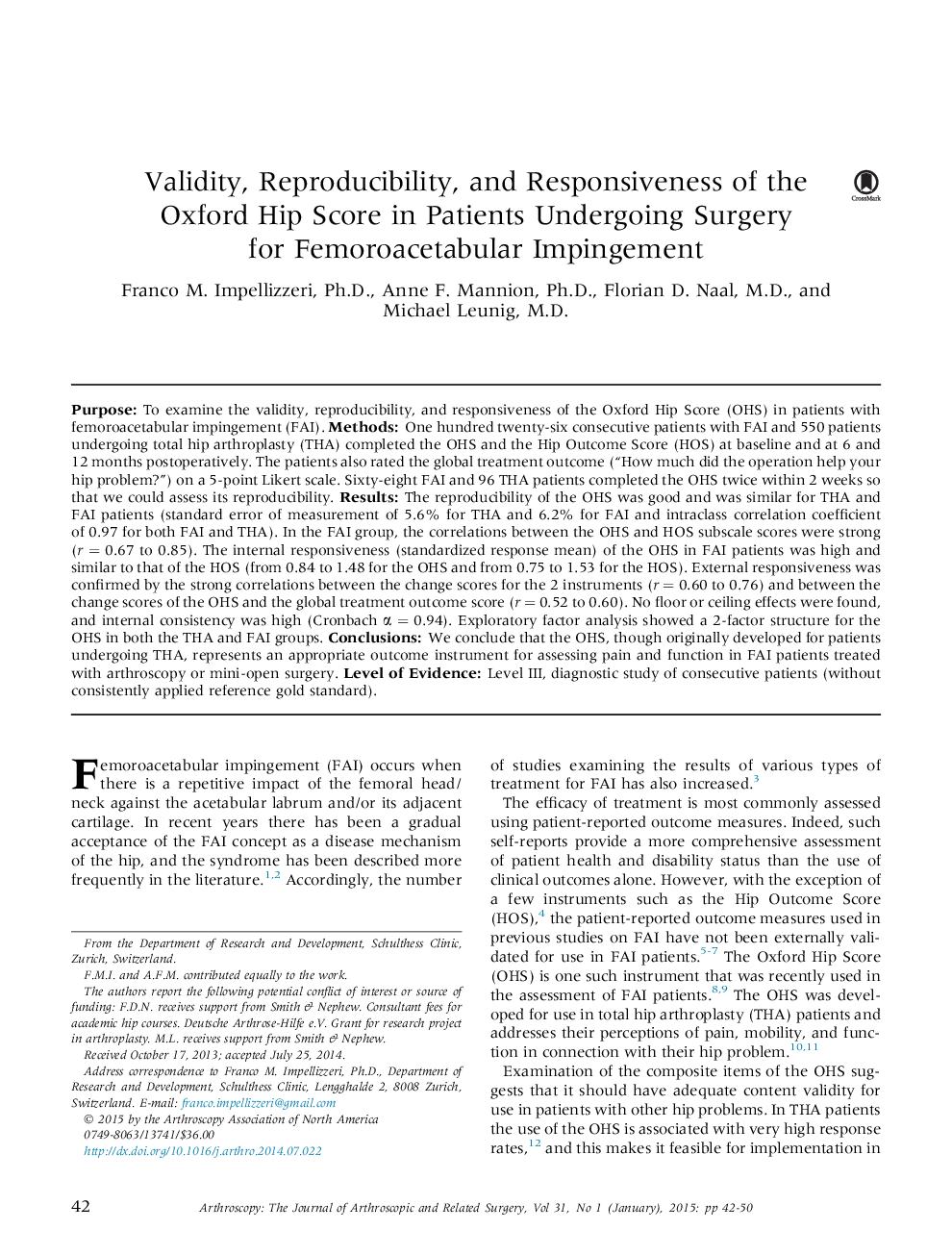| کد مقاله | کد نشریه | سال انتشار | مقاله انگلیسی | نسخه تمام متن |
|---|---|---|---|---|
| 4042723 | 1603488 | 2015 | 9 صفحه PDF | دانلود رایگان |
PurposeTo examine the validity, reproducibility, and responsiveness of the Oxford Hip Score (OHS) in patients with femoroacetabular impingement (FAI).MethodsOne hundred twenty-six consecutive patients with FAI and 550 patients undergoing total hip arthroplasty (THA) completed the OHS and the Hip Outcome Score (HOS) at baseline and at 6 and 12 months postoperatively. The patients also rated the global treatment outcome (“How much did the operation help your hip problem?”) on a 5-point Likert scale. Sixty-eight FAI and 96 THA patients completed the OHS twice within 2 weeks so that we could assess its reproducibility.ResultsThe reproducibility of the OHS was good and was similar for THA and FAI patients (standard error of measurement of 5.6% for THA and 6.2% for FAI and intraclass correlation coefficient of 0.97 for both FAI and THA). In the FAI group, the correlations between the OHS and HOS subscale scores were strong (r = 0.67 to 0.85). The internal responsiveness (standardized response mean) of the OHS in FAI patients was high and similar to that of the HOS (from 0.84 to 1.48 for the OHS and from 0.75 to 1.53 for the HOS). External responsiveness was confirmed by the strong correlations between the change scores for the 2 instruments (r = 0.60 to 0.76) and between the change scores of the OHS and the global treatment outcome score (r = 0.52 to 0.60). No floor or ceiling effects were found, and internal consistency was high (Cronbach α = 0.94). Exploratory factor analysis showed a 2-factor structure for the OHS in both the THA and FAI groups.ConclusionsWe conclude that the OHS, though originally developed for patients undergoing THA, represents an appropriate outcome instrument for assessing pain and function in FAI patients treated with arthroscopy or mini-open surgery.Level of EvidenceLevel III, diagnostic study of consecutive patients (without consistently applied reference gold standard).
Journal: Arthroscopy: The Journal of Arthroscopic & Related Surgery - Volume 31, Issue 1, January 2015, Pages 42–50
